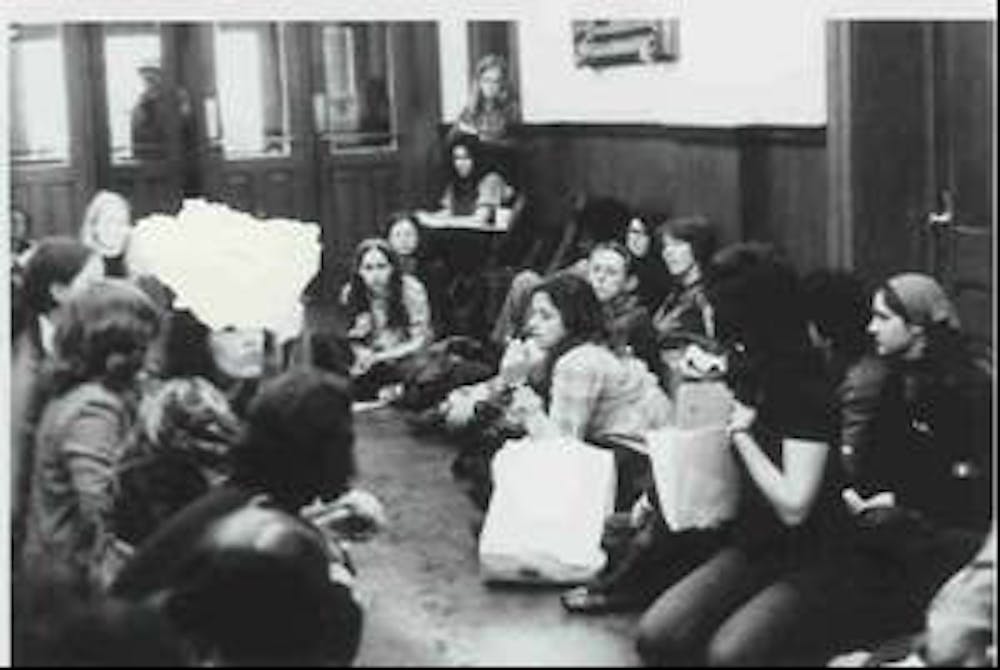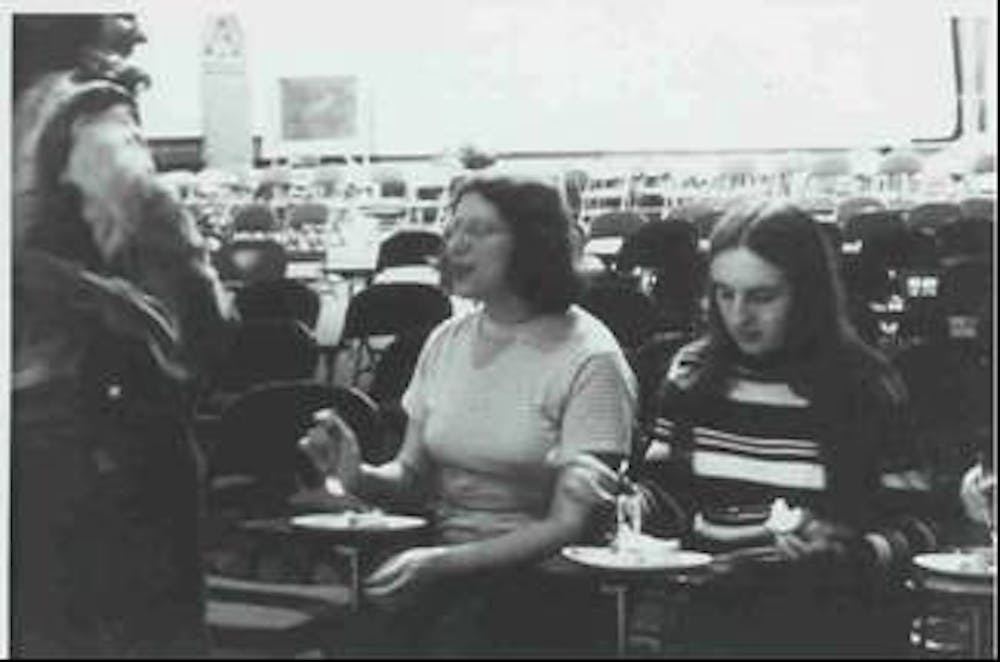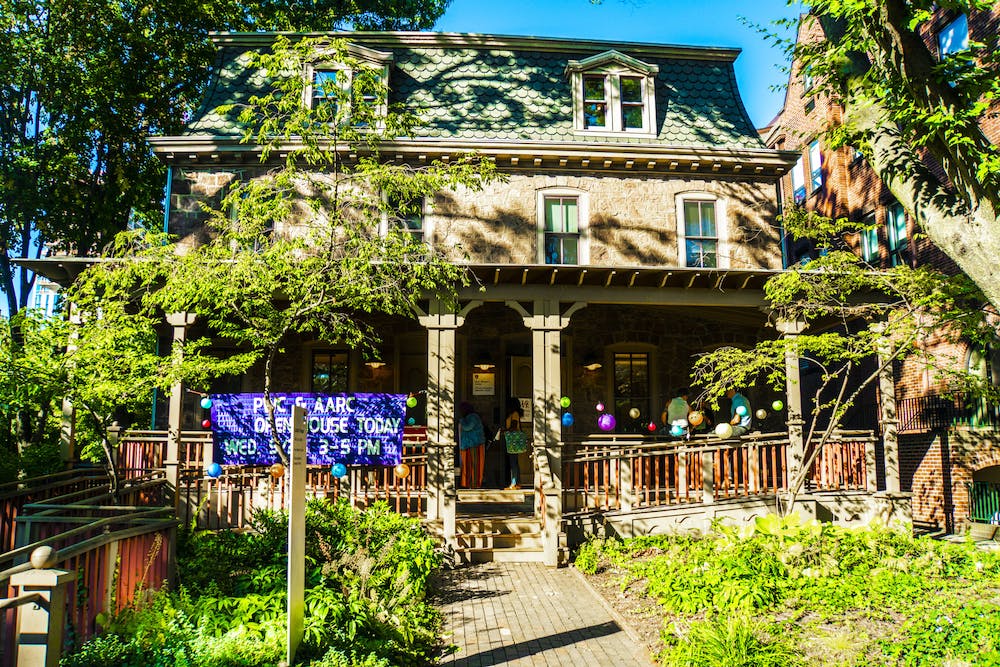Content warning: The following article includes mentions of rape, sexual violence, and murder, and can be disturbing and/or triggering for some readers. Please find resources listed at the bottom of the article.
In the early ‘70s, news of sexual assault on campus traveled in the forms of rumors and whispers.
“No one could confirm what was really happening,” Carol Tracy (C ‘76) says. “Because of the rumor mill, we didn’t know if there was one [assault] in Houston Hall or five.”
Before 1973, no woman on Penn’s campus was thinking about safety, or at least no woman that Tracy knew. But when the stories of sexual assault around campus began circulating, this changed.
From Tracy’s perspective, the rumors were largely ignored by Penn’s administration, contributing to a climate of fear for women on campus. When two nursing students were gang–raped in the SEPTA station at 34th and Chestnut streets in March of 1973, a group of Penn students decided they could no longer ignore the problem.
Tracy had been previously involved in feminist activism at Penn. She came to Penn as a secretary in 1968, taking night classes until she was able to enroll as a full–time student. Throughout that time, she was focused on a union movement for secretaries. But in 1973, her activism focus shifted to sexual harassment.
In April of that year, students and community members organized a sit–in at College Hall that would eventually lead to the founding of the Penn Women’s Center. The PWC still exists, offering a community space for gender equity on Penn’s campus, Director Elisa Foster says. Fifty years after the sit–in, their mission remains the same, even if the faces who are leading it have changed.
1973 was the height of the second–wave feminist movement, when equality for women was at the forefront of social activism. The Equal Pay Act was passed in the previous decade, prohibiting sex–based discrimination. Title IX had been enacted the year before, ending Penn’s gender–segregated honor societies. In January of that year, the United States Supreme Court ruled on Roe v. Wade, protecting abortion rights.
“With Title IX, people weren’t even thinking about sexual harassment,” Tracy says. While the Equal Pay Act, Title IX, and Roe v. Wade were legal victories, “sexual assault and domestic violence was the one issue that didn’t come from legislators but from grassroots movements.”
This grassroots organizing approach is what fueled the sit–in at College Hall. Efforts to start a Women’s Studies program at Penn were well underway, and students began to consider the best way to handle the assault rumors on campus. Survivors weren’t the ones to come forward; rather, it was students worried about it happening to them.
The students had previously met with the director of public safety to learn more about what was going on and how to stay safe. In the meeting, he offered them advice: Don’t wear provocative clothing.
“My response was, ‘I should be able to walk down Locust Walk buck naked and it’s still your job to protect me,” Rose Weber (C ‘75, L ‘96) says. “That meeting was the real catalyst that just got us mad enough that we decided we needed to sit–in.”
A few days after the meeting, Robin Morgan, radical feminist and author of Sisterhood is Powerful, came to give a campus talk by invitation from the English department. “She said, ‘You absolutely have to do something. This can’t go on,” Tracy recalls.
So students gathered in the Christian Association basement to make a plan. “Any story about the development of the Women’s Center has to take the CA into account,” former CA intern Betsy Sandel says. Later renamed Concern through Action, the anti–war movement had just ended, and the CA had been “the place for everything” throughout the protests. The students returned there to plan.
Their decision: a sit–in, one of the first all–women sit–ins on a college campus, and among the most influential.
“This was truly a collective moment,” Tracy says. “Students and community members worked really closely together to create a safe space for women on campus.”
Former Psychiatry and History professor Caroll Smith–Rosenberg and Tracy were the key negotiators, sitting around a table in College Hall with the president, provost, dean of students, and several other administrators.
They presented the group’s list of demands, which included better lighting on campus, a bus service, alarms in bathrooms, staffing of a senior–level policewoman to support assault survivors, the right to bring their dogs to class, and of course, the Women’s Center.
As they negotiated, over 200 students and community members occupied College Hall. “We just congregated. It was a huge number of people,” Sandel says. “And it wasn’t just all women. There were lots of male faculty and male students too, but mostly women, just congregated in the hallways.”

The group was careful not to violate open expression guidelines. They lined the hallways, ensuring they didn’t prevent anyone from entering the building or getting to their classes. Local restaurants provided food, and they slept in sleeping bags on the floor for four days.
As Tracy and Smith–Rosenberg continued negotiations, the dean of students received a note requesting their permission to rent College Hall 200, which had been the protest hotspot of the anti–war movement. He was surprised, telling Tracy that protests usually don’t rent the room. “Well, I’m sorry,” Tracy recalls Smith–Rosenberg responding. “Women are overly socialized, and we’re just going to stay until this is over.”

When Friday rolled around, the College Hall security guards were under the impression that the protestors would pack up and go home for the weekend. “By late afternoon, they realized we were really and truly going to stay as long as it took, and they basically caved,” Weber says.
Negotiations were straightforward. Every demand was met, much to the organizers’ surprise. In fact, Weber never expected the Women’s Center to become a reality—it was a throwaway demand, designed to be something they were willing to give up during negotiations.
“It was pretty clear the University had to do something,” Sandel says. “There was serious fear and danger, plus a public relations crisis.”
Getting the center off the ground was a “process,” according to Weber, but a process that moved quickly. Housed in Logan Hall (since renamed Claudia Cohen Hall), the PWC became a place for women to connect with each other and engage in activist work.
They also developed educational opportunities, including the Free Women’s School, a ‘courses without credit’ program offering women from Penn and the greater Philadelphia area an education in “areas not usually offered in the college curriculum,” Sandel says.

